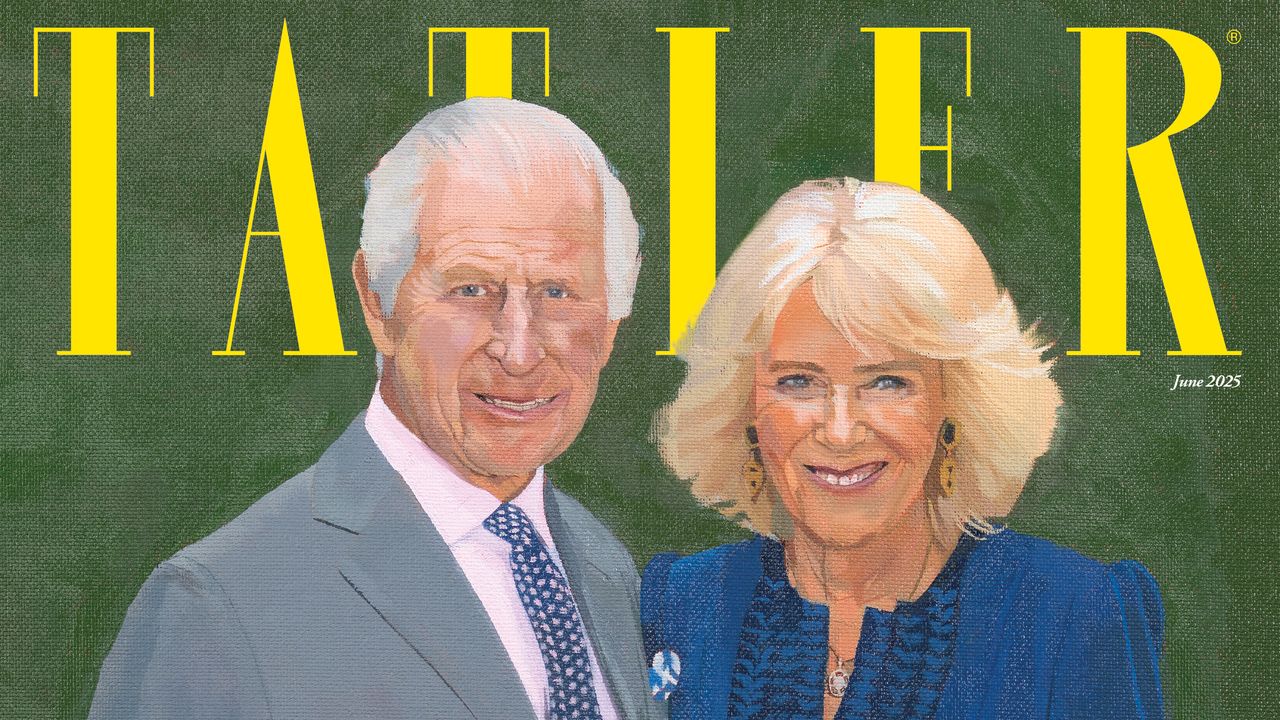By the time he got to secondary school, St Bonaventure’s in Forest Gate, Butah was regularly winning ‘artist of the month’, and his paintings were pinned up on the wall so that everyone could see them. It was a teacher at St Bonaventure’s who secretly entered one of his portraits in a national competition – called Young Artists’ Britain: The Prince of Wales’s Young Artists’ Award – which would end up being a real turning point for Butah. ‘That was the big one for me. I was just 16 and I got to meet the Prince of Wales. That’s when I realised that art really could open doors for you.’ Butah went on to paint Charles in 2009, and was invited to Clarence House for sittings. He was struck by the genuine interest taken by the now King in his career, which has continued to this day.
Butah’s big break came in 2023, when he was invited by the King to join him and the Queen as the official tour artist on their state visit to Kenya. It was ‘magical’, he says. ‘But they work very hard, and that is probably something that people don’t understand’
Philip Sinden
The Young Artists’ Britain competition was also instrumental in forging a friendship between Butah and the singer Ed Sheeran. It was Sheeran’s parents who were in charge of organising the award and the accompanying exhibition at Hampton Court, and they took the young artist under their wing, introducing him to their son Ed. The two talented and hard-working teenagers developed a great mutual respect for one another. ‘We both understood that art takes time,’ Butah tells me. Their collaboration culminated in 2017 in a biography entitled Ed Sheeran: A Visual Journey, with words by Sheeran and illustrations by Butah.
Butah credits Sheeran’s parents for encouraging him to go to art school, and he took a course in fine art at Central Saint Martins in London. ‘I was still building my craft and trying to get my portraits to where I wanted them to be,’ he reflects. ‘I think I have enough discipline to motivate myself, so I am not sure what I actually got from art school, but you do live and learn and I probably absorbed more than I realised.’
When he left art school, he kept on working and writing to people he admired, offering to paint their portraits. ‘I used to write to all sorts of people but especially athletes – they are the kind of people you want to draw. But I got so much rejection, it was sometimes tough to keep going.’ Keeping going, though, was essential to his sense of being: ‘Part of who I am is unlocked when I am drawing,’ he says. ‘So it is important to me to keep doing portraits. I love watching people. I really look at them and I think, “This person is an oil painting, this person is a charcoal drawing,” and it’s my way of making sense of them. I am painting a face, but as a portrait artist you need to understand the person behind the face – their emotions, their secrets, their soul. Often when I am painting a face, I won’t put the eyes in until last, because they have a way of looking back at you.’
